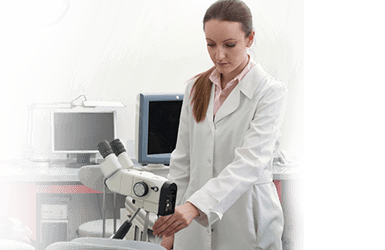Colposcopy
What is colposcopy?
Colposcopy is a procedure in which a special magnifying instrument called a colposcope is used to look into the vagina and into the cervix. The colposcope gives an enlarged view of the outer portion of the cervix.
Why would a colposcopy be necessary?
Colposcopy is done when there are abnormal changes in the cells of the cervix as seen on a Pap test. Further, it may be done to assess problems such as genital warts on the cervix, inflammation of the cervix, benign growths or polyps, pain and bleeding.
How is the procedure done?
During a colposcopy, you will lie on your back with feet raised just as you do when you have a regular pelvic exam. The doctor uses an instrument called a speculum to hold the walls of the vagina apart. Then the colposcope is placed at the opening of your vagina. A mild solution may be applied to the vagina and cervix with a cotton swab. This makes abnormal areas to be seen easily. The doctor will look inside the vagina to locate any problem. If there are any abnormalities, the doctor may take a small tissue sample called a biopsy. You may feel a mild pinch or cramp while the biopsy sample is taken. The tissue is then sent to a laboratory for further study.
What to expect after the procedure?
Your gynaecologist will talk to you about any problems detected during colposcopy. If a sample of tissue was taken from your cervix (biopsy), the laboratory results should be ready in 5 working days.
Most women feel fine after colposcopy. You may feel a little lightheaded and if you had a biopsy, you may have some mild bleeding. Talk to your gynaecologist about how to take care of yourself after the procedure and when you need to return for a check-up.
What are the risks of colposcopy?
There may be a risk of infection when you have a colposcopy. Mild pain and cramping during the procedure and mild bleeding afterwards are common. This most often happens when a biopsy is done. If there is heavy bleeding, fever, or severe pain after the procedure, contact your gynaecologist immediately.




